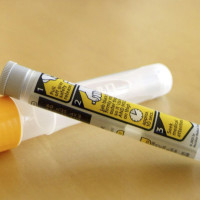It seems the U.S. just can’t get enough meat. Or does it?
According to data released this week by Rabobank, a research firm specializing in food and agriculture, per-capita meat consumption in the U.S. last year rose at a higher rate than any other year over the past four decades — to roughly 193 pounds of meat annually, 3.7 pounds a week.
This news comes after U.S. consumption of meat — red meat, in particular — dipped in 2014. In recent years, some in the industry have conjectured whether the U.S. had finally, much to the delight of environmentalists and animal protection groups alike, hit “peak meat.”
That does not appear to be the case, but the recent surge in U.S. carnivorism might have little to do with an actual increase in demand for meat products.
An increase in chicken consumption is largely driving the boom in meat-eating. According to the Rabobank data, Americans are eating nearly twice the amount of chicken as they are beef and pork — 89 pounds of chicken a year compared to 54 pounds and 50 pounds of beef and pork, respectively.
That’s likely due to an oversupply of poultry — the result of the industry ramping up production in response to previously-higher prices.
The oversupply pushed prices for chicken down, particularly when compared to the cost of beef and pork.
Paul Shapiro, vice president of farm animal protection at the Humane Society of the U.S., called the increased meat consumption “very disturbing” but attributed it to the chicken oversupply — conditions that appear likely to continue through this summer and will contribute to continued growth this year.
“It’s not correct to interpret the increased consumption as suggestive of increased consumer demand,” Shapiro said.
Shapiro pointed to the growing popularity of plant-based, alternative-protein products — a market the Plant Based Foods Association says grew an estimated 8.7 percent to $3.5 billion in annual sales over the past two years — as evidence that demand is not driving the surge in meat sales.
Diana Rice, associate director of nutrition communications for the Meatless Monday campaign, was also skeptical that the surge in meat consumption was indicative of a long-term trend.
“I believe that we’ll see this trend reversed because consumers want to make dietary choices that are good for their health and the environment,” Rice said.
Still, there’s reason to believe advocates pushing for Americans to eat less meat still face a climb that is very much uphill.
Marta Zaraska, a France-based science journalist whose recent book Meathooked explored the historical and psychological context for mankind’s love affair with animal flesh, pointed out that sales of plant-based meat alternatives remain practically microscopic when compared to U.S. meat sales, which surpass the GDP of entire nations like Hungary and Ukraine.
“In general, the levels of consumption are steady and even climbing a bit,” Zaraska said. “We really are hooked on meat.”
The meat industry, she said, is also pushing back feverishly against calls to eat less meat — and has the marketing budgets to ensure the message is heard.
To counteract that, Zaraska said change can’t simply be left up to individuals. She said a “meat tax” like one currently being proposed in Denmark or a clear target for reduced meat consumption — which the European Union is considering— could make an impact.
If we want to reduce meat’s environmental impact, she argued, we simply don’t have a choice.
“Considering that meat eating contributes as much to global warming as all the transportation combined,” Zaraska said, “it’s absolutely vital for humanity to lower our consumption.”













